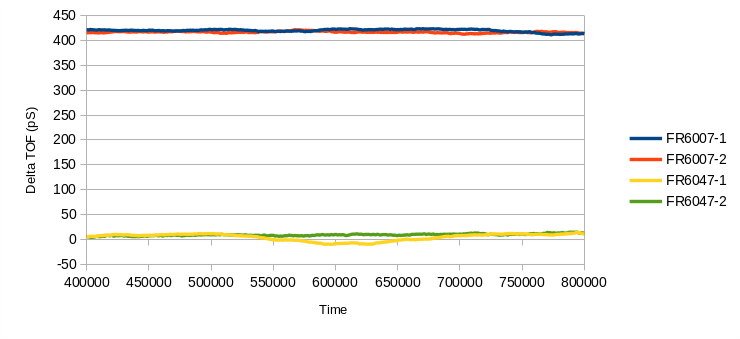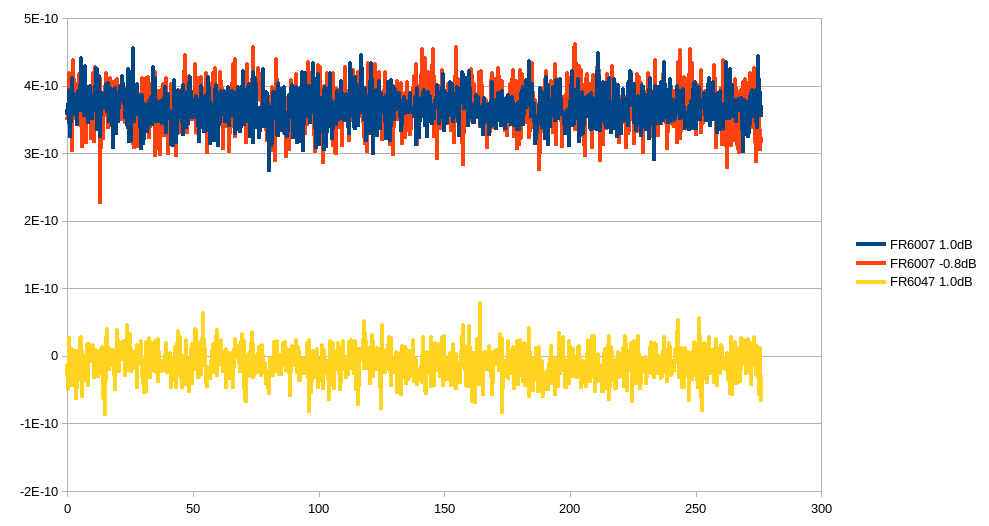Hello there.
As an experiment we have assembled four identical circuits, two populated with MSP430-FR6047s and two populated with MSP430-FR6007s.
When comparing the Delta ToF between the two microcontrollers, there is a marked difference between them with the FR6047 boards being close to zero and the FR6007 boards over 400 pS. See image below.
(This experiment was carried out by placing a flow cell in a tub of still water at room temperature. Data was collected using the latest Ultrasonic Sensing Design Center version 02_40_00_00.)
Is this to be expected from the different microcontrollers? Besides applying a Delta ToF offset, is there anything we can do in firmware to improve this?
Thanks for your help.
F



